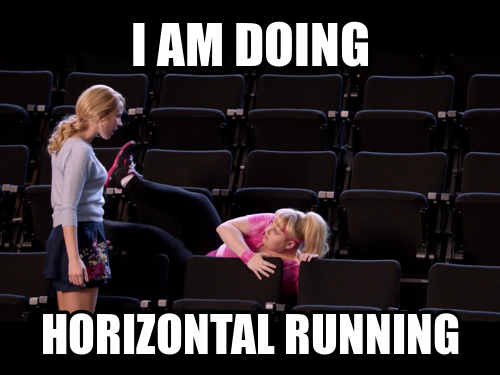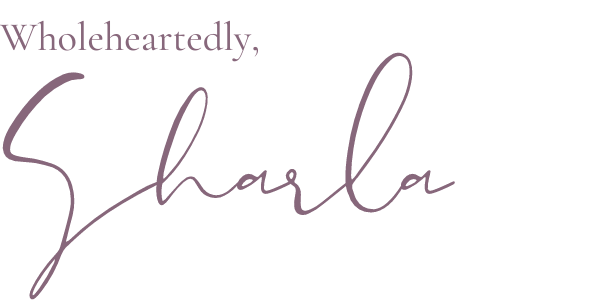Do you want to feel more control over overwhelming emotions?
I couldn't get a picture of it the other night, but have you ever had a one-person Broadway show? Where you are totally alone, uncaring about being seen or heard, and your heart just sings or dances like no one is watching?
I had a long drive by myself the other night that featured me and Hamilton, and I can happily say, I did every word to 'Satisfied' to my utter satisfaction.
At first, I didn’t want to. I wanted silence as I was driving back home from dropping my kiddos off at my in-laws.
My brain told me, “wow, that was a long day. I totally crammed too much into my first full day back to work after vacation and am so tired… I’m so drained, I wish I could just get home right now and lay down.”
When our brain gives us a signal, it also gives us an urge to do something.
With my thoughts, the signal was ‘drained', and the urge was to ‘get home and lay down’.
Is there a bad thing here with this thought and urge? No. When we are tired, sure, let’s rest. I’m a huge proponent for horizontal running when it’s needed (or not needed—it’s good to rest up sometimes).
Do we always have to be stuck with giving in to those urges, though?
No.
In fact, we often don’t. How often do you wake up in the morning and say “oh, I wish I didn’t have to do ____ today,” and then do it anyway? How often do you grumble or not want to do some errands/chores/etc, and still do it?
So why, when it comes to our emotions, do we let them dictate to us what to do?
The short answer is because we are socialized to do it. We have learned and lived stories throughout our lives of to do when X when Y happens. When we feel an urge to blink, we blink. When we feel a tummy grumble, we eat. When we feel like we need to go to the bathroom, we go.
The thing with emotions is, the urge tends to not fix the emotion (even though our goal is to do so), but keep it going, and sometimes, engaging in the urge elevates our distress of the emotion and we get overwhelmed by it.
Hear me out here.
When you feel sad or lonely, what is the urge your body gives you? Is it to go out and connect with someone or something? Often, no. It’s to watch a sad movie, think sad thoughts, play sad music, etc. When we do that, does it feel better?
Sure, sometimes it does. It’s okay to sit in the suck for a bit and lean into the emotions.
But it doesn’t tend to be effective when our emotions are overwhelming and distressing.
Here’s a secret for you… Emotions aren’t a thing to be feared, or even fixed. Just responded to, rather than reacted to.
Dr. Caroline Leaf, in her book, 101 Ways to be Less Stressed, says:
“There’s a major difference between reacting and responding. Reacting is often reflexive and impulsive, whereas responding is based on deliberate choice. Every day, we’re given the opportunity either to react, where to we can end up creating toxic thought patterns, negatively impacting our mental health, and damaging our relationships, or learn to respond and control our reactions. Responding requires gathering the facts first, taking time to think before speaking, and realizing that every thought or word creates a reality that will impact us and those around us. This gives us control, while just reacting gives someone or something else control over us” (Chapter 29).
Here’s one more secret (ok, not so secret—it’s pretty popular in the therapy world), that helps you to control and respond to overwhelming emotions.
This skill is one that I have used with hundreds of clients over the years, and it consistently is one that people keep in their frequently used section in their brain libraries.
It’s called “Opposite Action to Emotion". Original, hey? Just kidding—it is easy to remember though. It is a skill taught and utilized by Dialectical Behavioural Therapy (DBT) and has been used with thousands of people across the world who have had counselling with a therapist trained in DBT techniques.
This skill is simple; that is, it’s doing something different from the original urge of the emotion to effectively respond to the overwhelming emotion that is distressing.
Easier said than done? Yes. Uncomfortable at first? Also yes.
I like to look at it as jumping into the lake or pool or heading to the gym or work when at first you don’t want to go. At first, it kind of sucks, but then your body gets used to it, and responds accordingly.
I use this skill frequently (and always when it comes to laundry). For example, if I don't feel like doing something, I do the thing (most of the time), or if I feel stuck with ruminating thoughts or feeling overwhelmed, I do the opposite to change that.. and I've been doing this for years. I know I do better when I take a break from overwhelming emotions so that I can go back and effectively respond to the situation, rather than have my body react ineffectively. It’s like that emotional email or message that you draft up and leave for another day before sending, just to be sure it is a wise decision.
So... How's this done and What are the Results?
1. Identify an emotion you are feeling that is overwhelming or you would like to change
2. Identify the action urge associated with the emotion
3. Engage in the opposite of the urge in order to make a change.
For example practice, here's how I did it the other night:
1. I was feeling blah, drained, and overwhelmed.
2. I had the urge to sleep, complain, ruminate on my thoughts, and go down negative thought spirals.
3. I got energized by singing alongside a musical I love to focus on the story, the songs, the meaning, and the art with it.
When I do this activity, and when clients do as well, the results reported are that at the end of the activity one does in opposite to the urge of the initial overwhelming emotion, they tend to feel more neutral (read: less overwhelmed, less distressed, with a higher ability to think clearly and breathe). Not always pumped up or overly energized, but more likely feeling content, calm, and sometimes even satisfied. My result from the other night’s example was that I did find myself energized with a clearer head, and it’s likely because I’ve been memorizing Hamilton for a long time and I sang some songs without mumbling or forgetting the words. It was a proud moment.
This neutral can be a safe zone when you are trying to change the effect of overwhelming emotions and respond to gain back control over your thoughts. Learn more about that here.
We don’t always have to have or seek out polarizing emotions throughout the day. Neutrality can be a nice break from riding the waves of emotion. It’s like surfing regularly and then just taking a moment to sit on the board or go get some food on the beach. To learn more about riding the waves of emotion, check out this article on 4 Ways to Stop Letting Your Thoughts Control You and 4 Steps to Dealing with Stress & Anxiety.
When is this skill not effective?
This skill may not be appropriate when:
Your body is asking for safety,
It may not be realistic to a specific situation,
It may escalate the situation, or
If it may harm others.
You need to sit with your emotions and work through them.
If you want to learn more about this skill, check out Suffolk DBT’s article on the subject, DBT Self-Help’s resource guide, or contact us here at Bloom.
Hi, I’m Sharla.
I’m a Registered Social Worker who specializes in working with women to heal anxiety and all the fun it brings to the party, ADHD struggles, disordered eating, shame, and trauma.
I founded Bloom Narratives, a private practice that provides holistic wellness services.
Why? So you can be a game changer in your life. Because healing people heal people.







